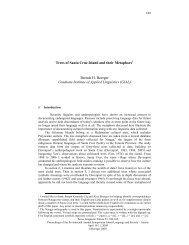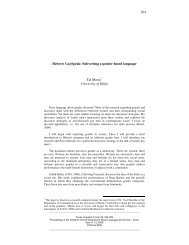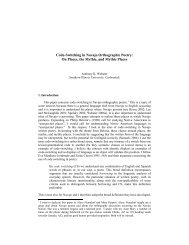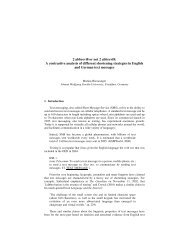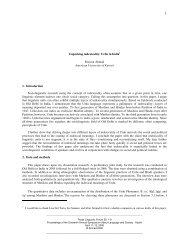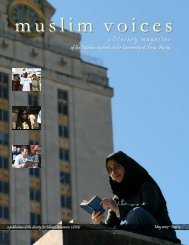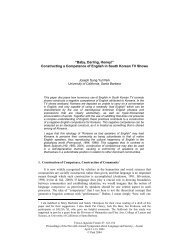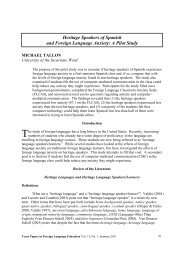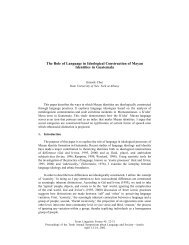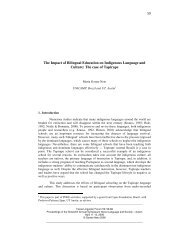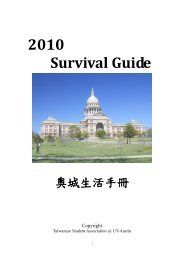Diversity and Intersectionality Sonja L. Lanehart University of Texas ...
Diversity and Intersectionality Sonja L. Lanehart University of Texas ...
Diversity and Intersectionality Sonja L. Lanehart University of Texas ...
Create successful ePaper yourself
Turn your PDF publications into a flip-book with our unique Google optimized e-Paper software.
<br />
Figure 1. <strong>Diversity</strong> <strong>and</strong> <strong>Intersectionality</strong><br />
While the theory began as an exploration <strong>of</strong> the oppression <strong>of</strong> women within society,<br />
today sociologists strive to apply it not only to women, but also to discussions <strong>of</strong> all<br />
peoples. Knowing that Black people live in a racist society is insufficient for describing<br />
their experiences. It is also necessary to know their ethnicity, gender, generation, class,<br />
sexual orientation, etc. Likewise, intersectionality holds that hegemonic institutions <strong>and</strong><br />
cultures as well as social semiotics reinforce oppressions, <strong>and</strong> shape them. One must<br />
constantly examine the ways hegemonic institutions <strong>and</strong> structures shape <strong>and</strong> are shaped<br />
by gender, race, ethnicity, religion, sexuality, class, nationality, etc. So, while a Supreme<br />
Court nominee is taken to task for saying that a wise Latina can sometimes come to a<br />
better judgement than a white male, we know that our identities <strong>and</strong> experiences provide<br />
the subjectivities for making us the unique individuals we are but they also affect all <strong>of</strong><br />
us—not just people <strong>of</strong> color. Likewise, intersectionality theory is not simply for the benefit<br />
<strong>of</strong> women but for the benefit <strong>of</strong> society. And though whiteness is seen as the norm in<br />
society <strong>and</strong> subsequently the st<strong>and</strong>ard for all judgements, comparisons, epistemologies,<br />
ontologies, etc., whiteness is not the absence <strong>of</strong> bias—it is the presence <strong>of</strong> particular<br />
biases.<br />
According to Leslie McCall (2005), there are three different approaches to studying<br />
intersectionality.<br />
<br />
(1) Anticategorical Complexity, which argues that social categories are<br />
an arbitrary construction <strong>of</strong> history <strong>and</strong> language <strong>and</strong> that they<br />
contribute little to underst<strong>and</strong>ing the ways in which people<br />
experience society. “For example, the category <strong>of</strong> gender was first<br />
understood as constituted by men <strong>and</strong> women, but questions <strong>of</strong> what<br />
distinguishes a man from a woman—is it biological sex, <strong>and</strong> if so<br />
what is biologically male <strong>and</strong> female?—led to the definition <strong>of</strong><br />
<strong>Texas</strong> Linguistic Forum 53: 1-7<br />
Proceedings <strong>of</strong> the Seventeenth Annual Symposium About Language <strong>and</strong> Society – Austin<br />
April 10-11, 2009<br />
©<strong>Lanehart</strong> 2009<br />
3



